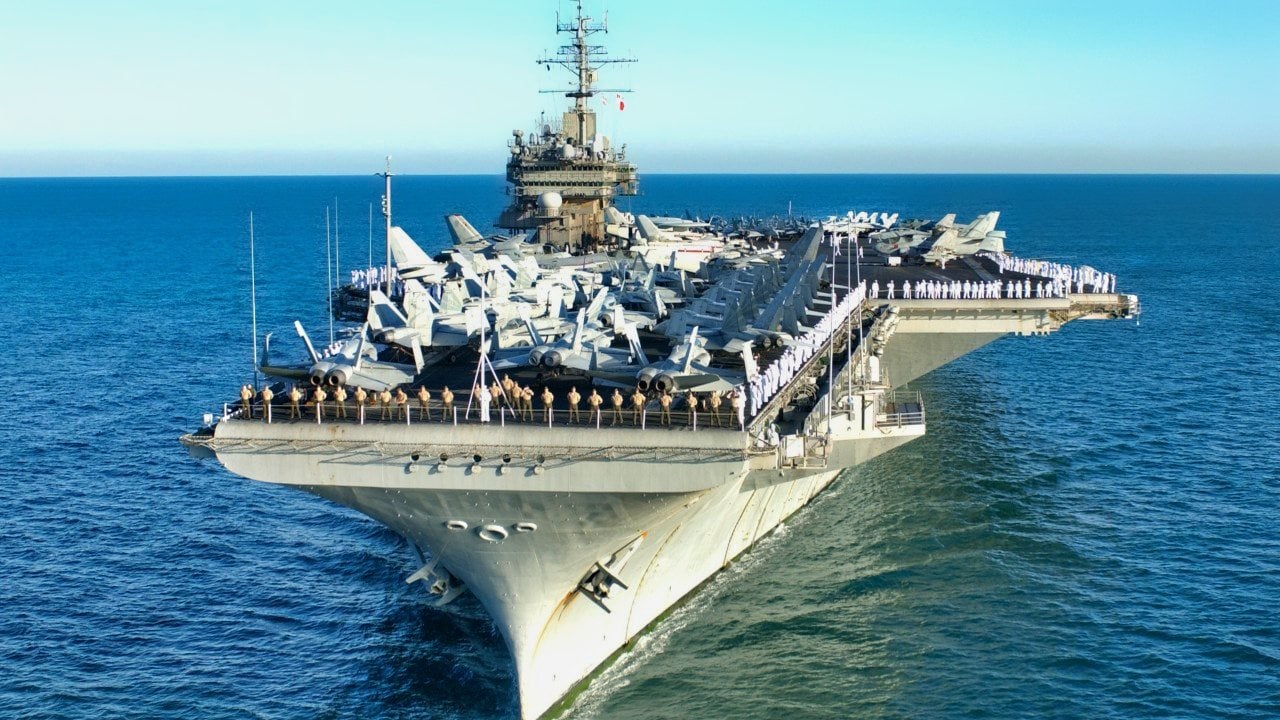'Sir, a Missile Hit the Aircraft Carrier': The U.S. Navy's Worst Nightmare Could Happen
As Iran continues to fuel the Houthis arsenal of weapons, the potential for a future strike on an American aircraft carrier is not fully out of the question.
Summary and Key Points: Capt. Christopher Hill of the USS Dwight D. Eisenhower recently mocked Houthi rebels' false claims of sinking the aircraft carrier, a rumor spread by Iranian and Chinese social media.

-Despite the vast superiority of the U.S. Navy, Houthi attacks on vessels in the Red Sea remain a concern.
-The Houthis, backed by Iran, have accumulated a significant arsenal, including UAVs and anti-ship missiles, with Iranian support bolstering their capabilities since 2015.
The Real Danger Behind Houthi Rebels' Claims Against the USS Eisenhower Aircraft Carrier
While their current lack of advanced intelligence and surveillance reduces the threat level, the possibility of a successful strike cannot be entirely dismissed as Iran continues to enhance their weaponry.
Leader of the USS Dwight D. Eisenhower recently took to social media to poke fun at the Houthi rebels, who claimed to have sunk the aircraft carrier earlier this month. The Iranian-backed militant group has actually proclaimed to have hit or sunk the massive ship on numerous occasions. Social media accounts linked to the governments in Iran and China have circulated these rumors, which were largely dismissed.
However, Capt. Christopher Hill struck back at the absurd claim in an interview with the Associated Press, noting that the Yemen-based group is “attempting to maybe inspire themselves through misinformation.”
Obviously, the U.S. Navy far outmatches the Houthi rebels in terms of manpower, weaponry and capability. Regardless of this fact, the militant group’s frequent attacks on commercial vessels and warships in the Red Sea should not be dismissed as insignificant.
In the same Associated Press interview mentioned earlier, a sailor aboard the Eisenhower expressed that “It’s pretty much the day-in, day-out stress of knowing that we are being shot at definitely gives a realism to the whole experience that this is not a normal deployment.”
The U.S. and the UK have been carrying out retaliatory strikes targeting the Houthis and its assets in the region in an effort to further degrade the group’s capabilities.
An overview of the Houthis weapons supply:
Since Hamas’s October 7 massacre in Israel, the Iranian-linked group has partnered with the regime’s other regional affiliates to bombard the Gulf of Oman and Red Sea with barrages.
The Houthis have largely amassed an arsenal of unmanned aerial vehicles (UAVs) and anti-ship weaponry, including cruise missiles and ballistic missiles.
The Houthis, like their regional Iranian-sponsored terror affiliates, have acquired training, funding, and scores of supplies from the Islamic Revolutionary Guard Corps (IRGC).
As detailed by the International Institute for Strategic Studies earlier this year, “Iranian assistance has been key to these upgrades to the Houthi’s anti-ship missile capability since 2015. In 2016, the Houthis struck the Emirati troop-transport catamaran HSV-2 Swift and tried to attack the USS Mason (DDG-87), an Arleigh Burke-class guided missile destroyer, leading the United States to fire Tomahawk land-attack cruise missiles (LACMs) against Houthi targets. The Houthis reportedly employed Iranian-made anti-ship missiles in these attacks, although hard evidence of this link was lacking at the time.”
The Houthis would need to get lucky once to hit an aircraft carrier
Even with this vast array of weaponry available, the Houthis lack intelligence, reconnaissance and surveillance tools that are often necessary when using long-range anti-ship systems.
This discrepancy, coupled with the superiority of America’s own military systems and carrier capabilities would make it extremely unlikely for the group to actually cause serious damage to any of its warships.

The Eisenhower, however, like its sister carriers, is not invincible.
As Iran continues to fuel the Houthis arsenal of weapons, the potential for a future strike on an American aircraft carrier is not fully out of the question.
About the Author: Maya Carlin
Maya Carlin, National Security Writer with The National Interest, is an analyst with the Center for Security Policy and a former Anna Sobol Levy Fellow at IDC Herzliya in Israel. She has by-lines in many publications, including The National Interest, Jerusalem Post, and Times of Israel. You can follow her on Twitter: @MayaCarlin.
The main image is from social media depicting a fake aircraft carrier attack. All others are Creative Commons.


